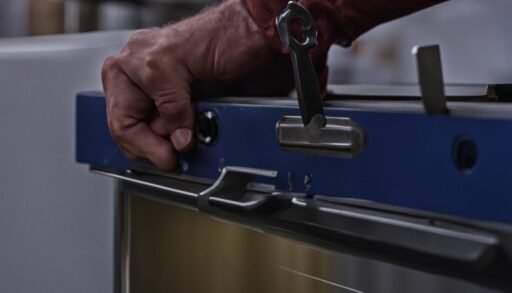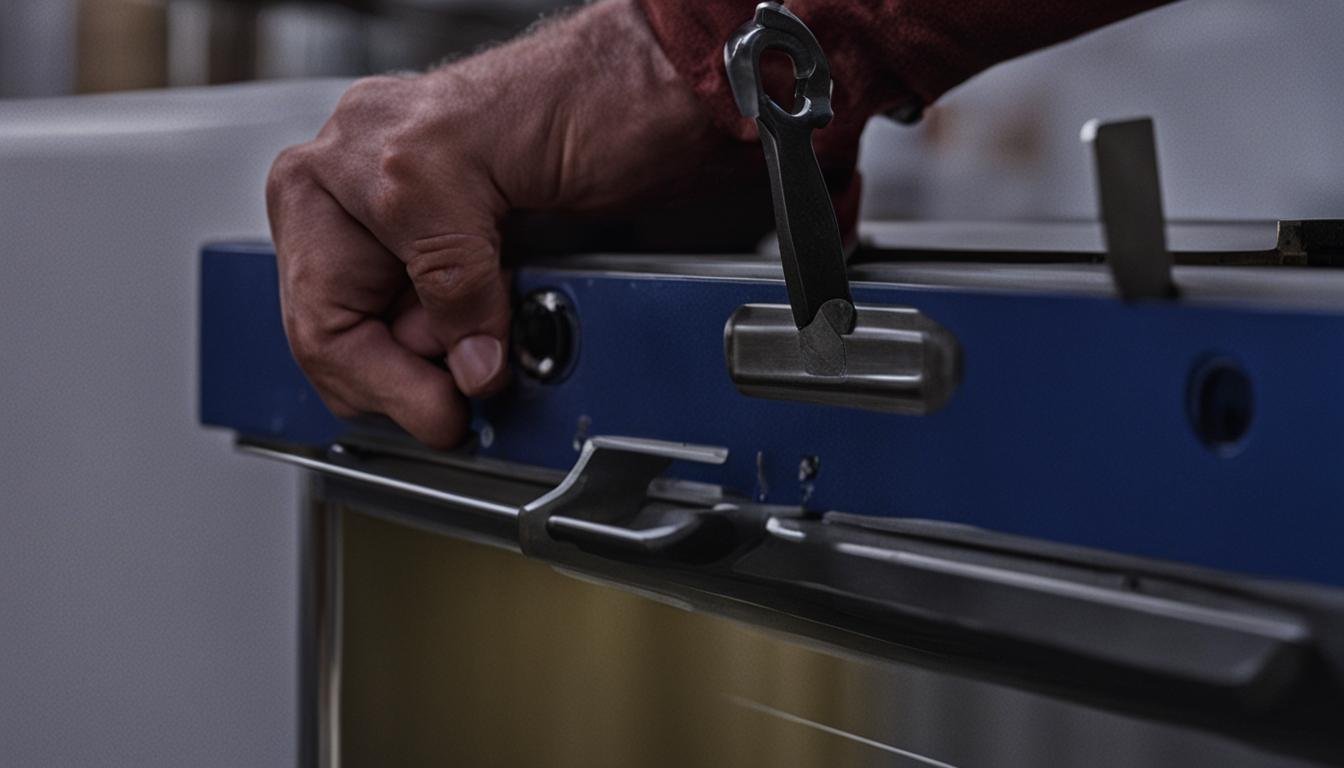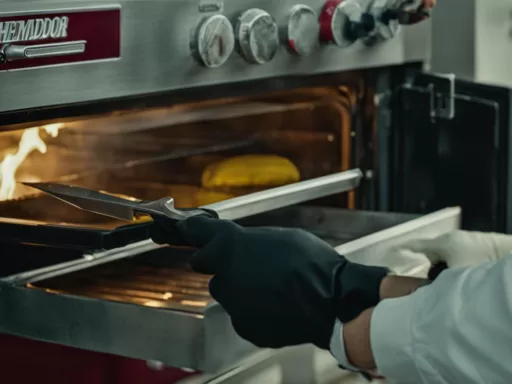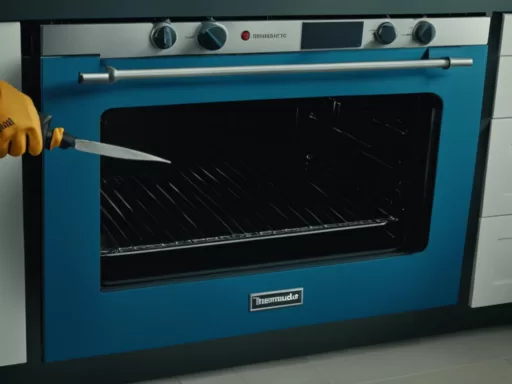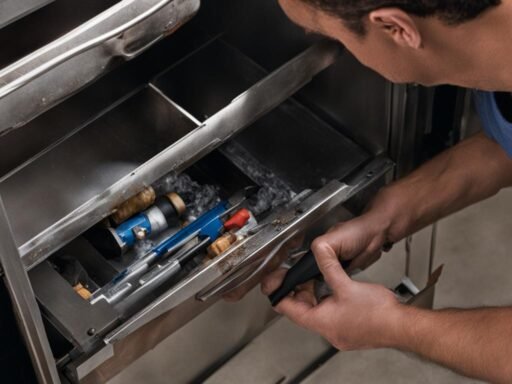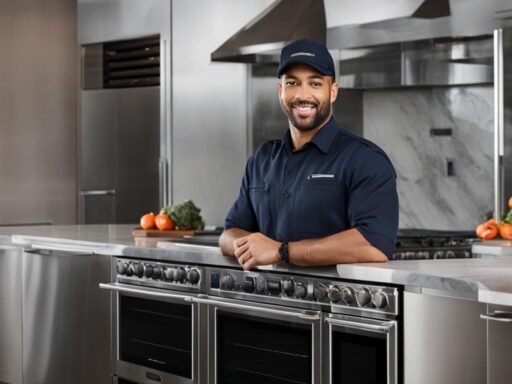Keeping your Sub-Zero refrigerator in optimal condition is essential for preserving the freshness of your food. In this comprehensive guide, we will provide you with expert tips and troubleshooting techniques to help you repair and maintain your Sub-Zero refrigerator. Whether you are dealing with cooling issues, a warm freezer, or a malfunctioning ice maker, our guide will walk you through the steps to resolve these problems. With the help of our Sub-Zero certified technicians and repair experts, you can ensure that your refrigerator operates efficiently and effectively for years to come.
Key Takeaways:
- Regular maintenance is crucial for keeping your Sub-Zero refrigerator in top condition.
- If your refrigerator is not cooling properly, check the fan, temperature sensor, and door seal.
- Warm freezer issues can often be resolved by checking the door seal or defrost control board.
- Simple troubleshooting steps can address minor issues before calling for professional repair.
- Address extended running times by ensuring there are no obstructions and cleaning the condenser.
Troubleshooting Warm Refrigerator Temperatures
When your Sub-Zero refrigerator is not cooling properly, it can lead to food spoilage and potential health risks. Warm temperatures in the refrigerator section can be caused by various factors, including a malfunctioning fan, temperature sensor or thermostat, compressor, evaporator, or condenser, and problems with the door seal or gasket.
In this section, we will provide you with troubleshooting steps to identify and address these issues. It is important to note that only a Factory Certified Service technician can determine the exact cause of the cooling issue. Following our troubleshooting guidelines can help you resolve the problem or provide valuable information to the technician when scheduling a repair appointment.
Common Causes of Warm Refrigerator Temperatures
- Malfunctioning fan: A faulty fan can hinder the circulation of cold air in the refrigerator, resulting in warm temperatures. Consider inspecting and testing the fan for proper operation.
- Temperature sensor or thermostat: A defective sensor or thermostat can cause incorrect temperature readings and lead to inadequate cooling. Refer to the user manual or consult a certified technician to diagnose and replace the faulty component if needed.
- Compressor: A malfunctioning compressor may result in insufficient cooling power. If you suspect an issue with the compressor, it is advisable to seek professional assistance.
- Evaporator or condenser problems: Clogged or damaged evaporator coils or condenser can impede the heat exchange process, leading to warm refrigerator temperatures. Inspect these components for any visible signs of blockage or damage.
- Door seal or gasket: A worn or faulty door seal can cause warm air infiltration and restrict the refrigerator’s ability to cool properly. Check the door seal for any gaps, tears, or debris and replace it if necessary.
- Malfunctioning fan: A faulty fan can hinder the circulation of cold air in the refrigerator, resulting in warm temperatures. Consider inspecting and testing the fan for proper operation.
- Temperature sensor or thermostat: A defective sensor or thermostat can cause incorrect temperature readings and lead to inadequate cooling. Refer to the user manual or consult a certified technician to diagnose and replace the faulty component if needed.
- Compressor: A malfunctioning compressor may result in insufficient cooling power. If you suspect an issue with the compressor, it is advisable to seek professional assistance.
- Evaporator or condenser problems: Clogged or damaged evaporator coils or condenser can impede the heat exchange process, leading to warm refrigerator temperatures. Inspect these components for any visible signs of blockage or damage.
- Door seal or gasket: A worn or faulty door seal can cause warm air infiltration and restrict the refrigerator’s ability to cool properly. Check the door seal for any gaps, tears, or debris and replace it if necessary.
If you have addressed these potential causes and are still experiencing warm refrigerator temperatures, it is recommended to contact a Factory Certified Service technician to diagnose and resolve the issue.
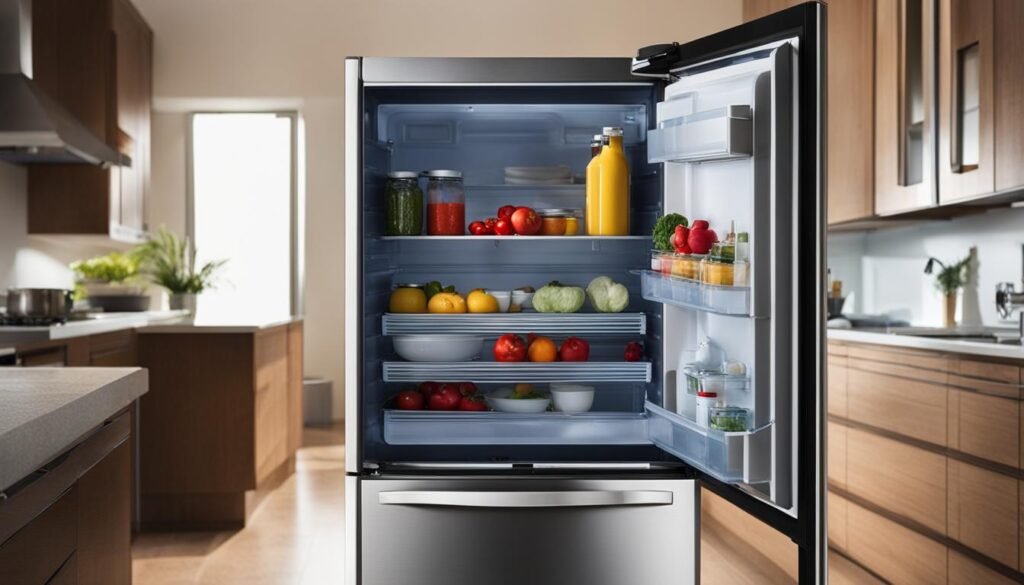
Troubleshooting a Warm Freezer and Ice Maker
A warm freezer can spell trouble by causing your food to thaw and spoil, while a dysfunctional ice maker can be a source of inconvenience and frustration. In this section, we will provide you with expert guidance on how to troubleshoot these common issues that may arise with your Sub-Zero refrigerator.
One of the main causes of a warm freezer is leaving the door open for an extended period. This can disrupt the cooling process and result in elevated temperatures. Another culprit could be a faulty door seal or gasket, which allows warm air to enter the freezer and interferes with proper freezing.
Additionally, a defective defrost control board or a malfunctioning defrost timer can also lead to a warm freezer. These components are responsible for regulating the defrost cycle, and when they fail, frost buildup may occur and obstruct the cooling process.
When troubleshooting your freezer issues, start by ensuring that the door is fully closed and sealing tightly. If the problem persists, check the defrost control board and defrost timer for any signs of damage or malfunction. If necessary, consult a certified technician to repair or replace these components.
Troubleshooting an Ice Maker That Isn’t Working
If your ice maker is not producing ice or functioning properly, there are a few troubleshooting steps you can take before seeking professional assistance. First, ensure that the ice maker is turned on and that the switch or lever is in the correct position. It’s also essential to check whether the water supply line is properly connected and supplying water to the ice maker.
If the ice maker still isn’t working, it may be necessary to inspect the water inlet valve for any clogs or malfunctions. Additionally, check the position of the ice container to ensure it is properly inserted and not causing any blockages or obstructions.
By following these troubleshooting steps for your warm freezer and ice maker, you can potentially identify and resolve the issues on your own. However, if the problems persist or you require professional assistance, don’t hesitate to reach out to a Sub-Zero certified technician for expert repair and maintenance.
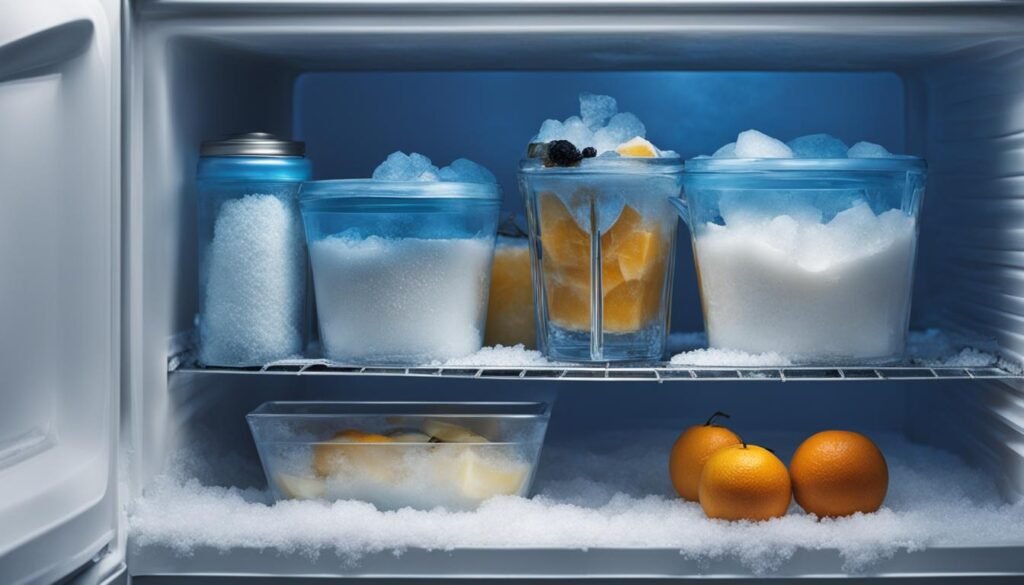
Key Troubleshooting Steps for a Warm Freezer:
- Ensure the freezer door is fully closed and sealing tightly.
- Check for a faulty door seal or gasket and replace if necessary.
- Inspect the defrost control board and defrost timer for any signs of damage or malfunction.
- Consult a certified technician to repair or replace the defrost control board or defrost timer if needed.
Key Troubleshooting Steps for an Ice Maker That Isn’t Working:
- Make sure the ice maker is turned on and in the correct position.
- Check the water supply line and ensure it is properly connected.
- Inspect the water inlet valve for clogs or malfunctions and clean or replace if necessary.
- Verify that the ice container is properly inserted and not causing any blockages.
Troubleshooting a Stopped Refrigerator
If your Sub-Zero refrigerator stops working completely, it can be a cause for concern. However, before assuming that the unit has failed, there are a few troubleshooting steps you can take to identify and potentially resolve the issue.
- Check the power source. Ensure that the refrigerator is plugged in and that the power outlet is functioning properly. Additionally, make sure that the circuit breaker for the refrigerator has not tripped.
- Inspect the control panel. Verify that the control panel is responsive and displays the correct settings. If there are any error messages or alerts, consult the user manual or contact Sub-Zero customer support for further assistance.
- Consider any recent power outages. If there was a power outage in your area, the refrigerator may have entered a defrost mode. In this case, allow the refrigerator to run for a while and see if it restarts automatically.
By following these simple troubleshooting techniques, you can rule out minor issues that may cause the refrigerator to stop working. If the problem persists after attempting these steps, it is recommended to contact a professional Sub-Zero technician for further diagnosis and repair.
Frequently Asked Questions
Q: What should I do if the refrigerator still doesn’t work after troubleshooting?
Answer: If the refrigerator does not start working after following the troubleshooting steps, it is advisable to seek professional assistance. Contact a certified Sub-Zero technician who can diagnose and repair any underlying issues with your refrigerator.
| Possible Causes | Troubleshooting Steps |
|---|---|
| Power outage | Wait for the refrigerator to restart after the power is restored. If it does not restart, proceed to the next troubleshooting steps. |
| Defrost mode | Allow the refrigerator to run for some time and see if it restarts automatically. If not, move to the next troubleshooting steps. |
| Circuit breaker tripped | Check the circuit breaker for the refrigerator and reset it if necessary. If the breaker continues to trip, consult an electrician. |
| Control panel malfunction | Inspect the control panel for any errors or unresponsive buttons. Refer to the user manual or contact Sub-Zero customer support for further guidance. |
Troubleshooting an Inoperative Ice Maker
A malfunctioning ice maker can be a frustrating problem to deal with. However, before scheduling a Sub-Zero refrigerator repair, there are often simple troubleshooting steps you can take to address the issue on your own.
Check if the Ice Maker is Turned On
Ensure that the ice maker is turned on through the control panel. Sometimes, a simple switch or button may have accidentally been turned off, causing the ice maker to stop working.
Verify Water Supply
Next, check if the ice maker is properly connected to the water supply. If the water supply line is kinked, frozen, or disconnected, it can prevent the ice maker from functioning correctly.
Position the Ice Container Correctly
Make sure that the ice container is in the correct position. If it is not properly aligned or placed, it can obstruct the ice maker’s operation and prevent ice production.
By following these troubleshooting steps, you can potentially resolve the ice maker issue without the need for professional assistance. However, if the problem persists or you are unable to determine the cause, it is recommended to contact Sub-Zero certified technicians for further diagnosis and repair.
Addressing Extended Running Times
If your Sub-Zero refrigerator is running for longer periods of time than usual, it may be due to various factors. Extended running times can impact both the performance and energy efficiency of your refrigerator. In this section, we will explore the potential causes of extended running times and provide you with effective solutions to address them.
Possible Causes of Extended Running Times
There are a few common reasons why your Sub-Zero refrigerator may be running longer than usual:
- Cooler Temperatures: During hot days, cooler temperatures in your kitchen can cause your refrigerator to run for extended periods. The system works harder to maintain the set level, resulting in increased running times.
- Obstructions: Obstructions in the door or drawers can prevent them from closing properly. This can lead to warm air seeping into the refrigerator and triggering the system to run longer to maintain the desired temperature.
- Dirty Condenser: A dirty condenser can hinder the refrigerator’s heat dissipation process, causing the system to run longer to cool down. Regular cleaning of the condenser can help prevent this issue.
To address extended running times and restore optimal performance to your Sub-Zero refrigerator, follow the troubleshooting steps below:
Troubleshooting Extended Running Times
- Check the surrounding temperature: Ensure that the ambient temperature in the room is within the recommended range for your Sub-Zero refrigerator. Cooler temperatures can cause the system to run longer.
- Inspect and clean the door seals: Check for any damage or debris on the door seals. Clean them thoroughly to ensure a tight seal when the door is closed, preventing warm air from entering.
- Clean the condenser: Locate the condenser and carefully clean it using a soft brush or vacuum cleaner. Removing any dust or dirt build-up will improve heat dissipation and reduce running times.
- Ensure proper air circulation: Avoid overcrowding your refrigerator or blocking the vents inside. Arrange your items to allow for proper air circulation, allowing the system to cool efficiently.
By addressing these potential issues, you can help reduce extended running times and improve the overall performance of your Sub-Zero refrigerator. Regular maintenance and cleaning are essential to prevent obstructions and maintain optimal functioning.
Yearly Maintenance for Sub-Zero Refrigerators
Regular maintenance is crucial for keeping your Sub-Zero refrigerator in top condition. By performing yearly maintenance tasks, you can extend the lifespan of your refrigerator and prevent potential issues. The primary maintenance task recommended by Sub-Zero is cleaning the condenser every three to six months. This helps with heat dissipation and ensures that your refrigerator operates efficiently.
To clean the condenser:
- Turn off the power to your refrigerator.
- Locate the condenser, usually located at the back or underneath the unit.
- Remove any debris or dust using a vacuum cleaner or a soft brush.
- For a more thorough cleaning, use a condenser coil cleaning brush to remove stubborn dirt.
- Once the condenser is clean, plug the refrigerator back in.
Some Factory Certified Service providers may offer yearly maintenance packages that include additional services such as checking and adjusting the door seal, inspecting the fan and evaporator, and lubricating moving parts. These services can help identify and address potential problems before they become major issues.
Remember that Sub-Zero refrigerators are complex appliances, and if you are not comfortable performing maintenance tasks yourself, it is always best to seek professional assistance. Sub-Zero certified technicians have the expertise and knowledge to ensure that your refrigerator receives the proper care it needs.
By following these maintenance guidelines and seeking professional assistance when needed, you can enjoy the benefits of a fully functioning Sub-Zero refrigerator for many years to come.
Conclusion
Repairing and maintaining your Sub-Zero refrigerator doesn’t have to be a daunting task. By following the tips and troubleshooting techniques outlined in this guide, you can address common issues and ensure your refrigerator operates efficiently. Regular maintenance, such as cleaning the condenser, is crucial for optimal performance and energy efficiency.
However, if you encounter complex problems or require professional assistance, it is always recommended to reach out to Sub-Zero certified technicians and repair experts. These experts have the necessary expertise and knowledge to provide comprehensive solutions to any refrigerator issues you may face.
By prioritizing regular maintenance and seeking professional help when needed, you can enjoy the benefits of a fully functioning Sub-Zero refrigerator for years to come. Whether it’s troubleshooting, maintenance, or repair, trust the expertise of Sub-Zero refrigerator repair experts to ensure your appliance remains in top-notch condition.
FAQ
How do I troubleshoot warm temperatures in my Sub-Zero refrigerator?
Warm temperatures in the refrigerator section can be caused by various factors, including a malfunctioning fan, temperature sensor or thermostat, compressor, evaporator, or condenser, and problems with the door seal or gasket. To troubleshoot this issue, you can try cleaning the condenser, checking the door seal for any gaps, ensuring the fan is working properly, and checking the temperature settings. If the problem persists, it is recommended to contact a Sub-Zero certified technician for a professional diagnosis.
What are the common causes of a warm freezer and a malfunctioning ice maker?
A warm freezer can be caused by leaving the door open, a faulty door seal, a defective defrost control board, or a malfunctioning defrost timer. To troubleshoot this issue, you can check if the door seal is intact, ensure that the defrost control board and timer are functioning properly, and avoid leaving the freezer door open for extended periods. As for a malfunctioning ice maker, you should check if it is turned on through the control panel, properly connected to the water supply, and if the ice container is in the correct position.
What should I do if my Sub-Zero refrigerator stops working completely?
Before assuming that the unit has failed, you can perform a few troubleshooting steps. First, check if the power is on and if the circuit breaker is not tripped. Next, verify if the refrigerator is in defrost mode and wait for it to restart. If the problem persists, it is advisable to seek professional assistance from a Sub-Zero certified technician.
How can I address extended running times of my Sub-Zero refrigerator?
Extended running times can be influenced by factors such as cooler temperatures on hot days, obstructions in the door or drawers, and a dirty condenser. To address this issue, ensure that the refrigerator is properly sealed and not obstructed, and clean the condenser regularly. By doing so, you can optimize the performance and energy efficiency of your Sub-Zero refrigerator.
What is the recommended maintenance for Sub-Zero refrigerators?
Sub-Zero recommends cleaning the condenser every three to six months as the primary maintenance task. This helps with heat dissipation and ensures that the refrigerator operates efficiently. Additionally, some Factory Certified Service providers may offer yearly maintenance packages that include additional services. Regular maintenance is important for extending the lifespan of your Sub-Zero refrigerator and preventing potential issues.
How can I repair and maintain my Sub-Zero refrigerator on my own?
While some troubleshooting steps can be performed by homeowners, it is advisable to seek professional assistance from Sub-Zero certified technicians and repair experts for complex problems and repairs. By following the tips and troubleshooting techniques provided in this guide, you can address common issues and ensure your refrigerator operates efficiently. Regular maintenance and professional help when needed can help you enjoy the benefits of a fully functioning Sub-Zero refrigerator for years to come.
